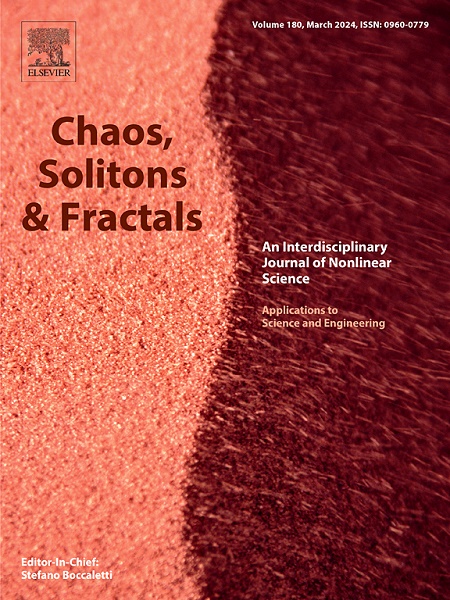Decoding angular dependence on transmission efficiency of Airyprime-Gaussian beam in dual-ring configurations
IF 5.3
1区 数学
Q1 MATHEMATICS, INTERDISCIPLINARY APPLICATIONS
引用次数: 0
Abstract
In the current pursuit of extreme laser efficiency in fields such as optical communication, how can we achieve optimal transmission effects with minimal energy consumption? The angle has emerged as a crucial key in this endeavor. This paper aims to investigate the impact of inter-ring angles on the transmission efficiency of dual-ring Airyprime-Gaussian beam array (DAPGBA), specifically analyzing the beam's auto-focusing capability, power, and auto-focusing efficiency, with experimental validation conducted. The results indicate that variations in angles do not significantly affect the transmission process of the array beams; rather, they determine the characteristics of the initial plane intensity distribution. When the initial planar local light intensity exhibits monopole convergence, the auto-focusing capability reaches its minimum. Conversely, when the local light intensity demonstrates multipole balance, the auto-focusing capability attains its maximum value. This differentiation manifests a nonlinear variation in the intensity distribution characterized by an ordered-to-chaotic transition. To facilitate a more effective measurement of transmission efficiency, a concept of auto-focusing efficiency is introduced. In scenarios where perfect double auto-focusing is achieved, it was observed that rotating the outer ring results in variations in the initial plane power, auto-focusing capability, and efficiency of the DAPGBA as a function of the rotation angle. Through the selection of angular parameters, we achieved nonlinear geometric regulation of the initial light intensity distribution in DAPGBA, thereby optimizing its transmission efficiency. When N = 8, the auto-focusing capability of 13.50 is obtained with the auto-focusing efficiency of 35.00 %. When N = 12, the auto-focusing capability reaches 17.30, with the auto-focusing efficiency up to 36.02 %. When N = 16, the auto-focusing capability of 21.60 is achieved, while the auto-focusing efficiency climbs to 43.15 %, and the power increases within 3.50 % compared with the minimum value. This approach provides a novel direction for improving multi-ring arrays, greatly enhancing the potential applications of such array beams in cutting-edge fields such as laser medicine, optical communication, lidar, and quantum optics.
求助全文
约1分钟内获得全文
求助全文
来源期刊

Chaos Solitons & Fractals
物理-数学跨学科应用
CiteScore
13.20
自引率
10.30%
发文量
1087
审稿时长
9 months
期刊介绍:
Chaos, Solitons & Fractals strives to establish itself as a premier journal in the interdisciplinary realm of Nonlinear Science, Non-equilibrium, and Complex Phenomena. It welcomes submissions covering a broad spectrum of topics within this field, including dynamics, non-equilibrium processes in physics, chemistry, and geophysics, complex matter and networks, mathematical models, computational biology, applications to quantum and mesoscopic phenomena, fluctuations and random processes, self-organization, and social phenomena.
 求助内容:
求助内容: 应助结果提醒方式:
应助结果提醒方式:


